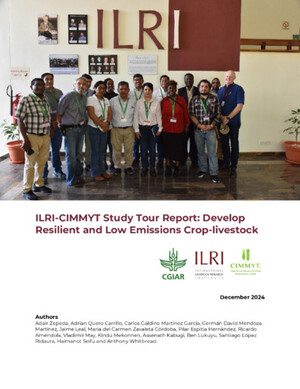
Competing use of organic resources, village-level interactions between farm types and climate variability in a communal area of NE Zimbabwe
Abstract
In communal areas of NE Zimbabwe, feed resources are collectively managed, with herds grazing on grasslands during the rainy season and mainly on crop residues during the dry season, which creates interactions between farmers and competition for organic resources. Addition of crop residues or animal manure is needed to sustain agricultural production on inherently poor soils. Objectives of this study were to assess the effect of village-level interactions on carbon and nutrient flows, and to explore their impact on the long-term productivity of different farm types under climate variability. Crop and cattle management data collected in Murewa Communal area, NE Zimbabwe was used together with a dynamic farm-scale simulation model (NUANCES-FARMSIM) to simulate village-level interactions. Simulations showed that grasslands support most cattle feed intake (c. 75%), and that crop residues produced by non-cattle farmers sustain about 30% of the dry season feed intake. Removal of crop residues (0.3–0.4 t C ha−1 yr−1) from fields of non-cattle farmers resulted in a long-term decrease in crop yields. No-access to crop residues of non-cattle farmers increased soil C modestly and improved yields in the long-term, but not enough to meet household energy requirements. Harvest of grain and removal of most crop residues by grazing cattle caused a long-term decline in soil C stocks for all farm types. The smallest decrease (−0.5 t C ha−1) was observed for most fertile fields of cattle farmers, who manure their fields. Cattle farmers needed to access 4–10 ha of grassland to apply 3 t of manure ha−1 yr−1. Rainfall variability intensifies crop–livestock interactions increasing competition for biomass to feed livestock (short-term effect) or to rehabilitate soils (long-term effect). Prolonged dry seasons and low availability of crop residues may lead to cattle losses, with negative impact in turn on availability of draught power, affecting area under cultivation in consecutive seasons until farmers re-stock. Increasing mineral fertiliser use concurrently with keeping crop residues in fertile fields and allocating manure to poor fields appears to be a promising strategy to boost crop and cattle productivity at village level. The likelihood of this scenario being implemented depends on availability of fertilisers and decision of farmers to invest in rehabilitating soils to obtain benefits in the long-term. Adaptation options cannot be blind to what occurs beyond field and farm level, because otherwise recommendations from research and development do not fit the local conditions and farmers tend to ignore them.
Citation
Rufino, M.C.; Dury, J.; Tittonell, P.; Wijk, M.T. van; Herrero, M.; Zingore, S.; Mapfumo, P.; Giller, K.E. 2011. Competing use of organic resources, village-level interactions between farm types and climate variability in a communal area of NE Zimbabwe. Agricultural Systems 104(2):175-190.










